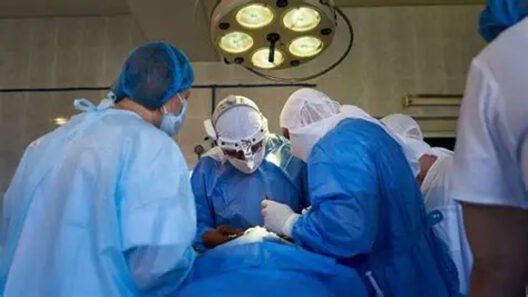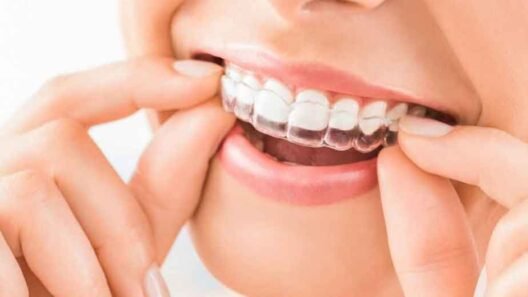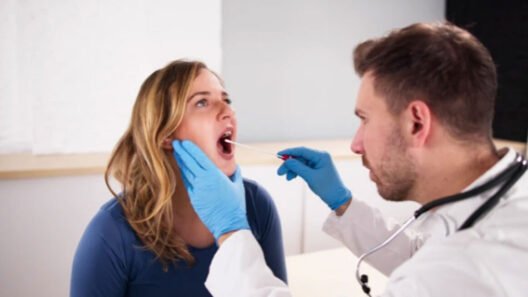Introduction
In a cardiac arrest, every second counts. Administering the right emergency drugs promptly can mean the difference between life and death. Understanding emergency drugs for cardiac arrest is crucial for effective intervention.
Consider these sobering statistics:
- According to the British Heart Foundation, in the UK, there are over 30,000 out-of-hospital cardiac arrests annually. Out of these, the survival rate is less than 1 in 10.
- Additionally, as per the Resuscitation Council UK, approximately 72% of cardiac arrests occur at home, and mostly 15% occur at a workplace.
These figures highlight the critical importance of immediate intervention during cardiac emergencies.
Let’s explore the essential emergency drugs for cardiac arrest situations. We will understand their administration routes and additional tests or treatments that may be required for effective care.
To maximise the effectiveness of these life-saving drugs, first understanding the different routes of administration is essential.
Routes of Administration
Medical professionals administer emergency drugs for cardiac arrest through multiple routes, each crucial in different scenarios. Choosing the right method significantly impacts drug absorption, effectiveness, and patient survival during resuscitation.
-
Intravenous
Intravenous (IV) administration is the preferred mode for delivering emergency drugs for cardiac arrests. It allows rapid circulation and helps in improving drug effectiveness. For this, a peripheral vein is accessed using a cannula.
Additionally, if IV access is difficult, central venous catheterisation is also an option. However, delays in administration can reduce treatment’s effectiveness significantly.
-
Intraosseous
When IV access is unavailable, intraosseous (IO) administration provides a rapid alternative. These emergency drugs for cardiac arrests enter the bone marrow and reach the circulatory system quickly. This method is particularly useful in critically ill patients.
Subsequently, IO access is achieved using a needle inserted into the tibia or humerus, allowing for immediate drug delivery.
-
Endotracheal
Doctors use endotracheal (ET) administration when IV and IO access are unavailable. They deliver emergency drugs through a breathing tube directly into the lungs, thus enabling systemic absorption.
However, ET drug doses must be higher than IV doses due to variable absorption rates and reduced bioavailability.
-
Intracardiac
Doctors directly inject the emergency drugs for cardiac arrests into the heart muscles during intracardiac injection. However, they rarely use this method due to its invasive nature and potential complications. Hence, it is considered only in extreme cases.
In this procedure, they insert a long needle into the left ventricle. Thus, they enable rapid drug action in cardiac emergencies.
Medical professionals must administer drugs correctly, but understanding the specific medications used during cardiac arrests is equally important. Each drug plays a distinct role in restoring circulation and stabilising the patient’s condition.
Drugs Used In Cardiac Arrest
Emergency drugs for cardiac arrest play a crucial role in reviving patients and stabilising their condition. Each medication serves a unique purpose, targeting specific cardiac issues. Rapid administration can significantly improve survival rates and overall recovery outcomes in critical situations.
-
Adrenaline
Adrenaline is one of the primary emergency drugs for cardiac arrest. It stimulates the heart and increases blood pressure.
Furthermore, it enhances coronary perfusion and improves the chances of successful resuscitation. Administered intravenously every three to five minutes, it is essential in advanced cardiac life support.
Despite its benefits, excessive doses may cause arrhythmias. Nonetheless, adrenaline remains a vital component of emergency cardiac care protocols.
-
Alteplase
Alteplase is a thrombolytic agent used in cardiac arrest caused by pulmonary embolism. This emergency drug dissolves blood clots, restoring circulation. As a result, it is crucial when an immediate clot breakdown is necessary.
Timely alteplase administration can significantly enhance survival. However, bleeding risks must be considered, especially in patients with recent surgeries or bleeding disorders.
-
Amiodarone
Amiodarone is an antiarrhythmic drug used to stabilise ventricular fibrillation and pulseless ventricular tachycardia. These emergency drugs for cardiac arrest help restore normal heart rhythm when defibrillation fails. Given intravenously, it prolongs the action potential duration, improving electrical stability.
However, excessive amiodarone use may depress cardiac function. Nevertheless, it remains critical for treating life-threatening arrhythmias in cardiac emergencies.
-
Lidocaine
Lidocaine is another antiarrhythmic medication used when amiodarone is unavailable. This emergency drug reduces ventricular excitability, thereby helping to control irregular rhythms. Given intravenously, it blocks sodium channels. Thus, stabilising heart functions.
Although effective, excessive lidocaine may depress the heart. Despite this, it remains a valuable option in managing refractory ventricular arrhythmias during resuscitation.
-
Atropine
Doctors use atropine in bradycardia-related cardiac arrest to increase the heart rate by blocking vagal activity. These kinds of emergency drugs for cardiac arrest restores circulation, especially in cases of severe vagal stimulation.
However, excessive atropine may cause tachycardia, but its role in treating severe bradycardia makes it indispensable in emergencies.
-
Calcium
Doctors administer calcium when hyperkalaemia, hypocalcaemia, or calcium channel blocker overdose causes cardiac arrest. This emergency drug stabilises cardiac cells and improves contractility. It is given intravenously during resuscitation.
Its overuse can lead to harmful calcium deposits, yet its importance in specific cardiac emergencies remains undeniable in certain emergency settings.
-
Magnesium
Magnesium is vital in treating torsades de pointes, a life-threatening ventricular arrhythmia. These emergency drugs for cardiac arrests help stabilise electrical activity in the heart. Given intravenously, it prevents recurrent arrhythmias and supports normal rhythm restoration.
Excess magnesium may depress respiration, yet its effectiveness in torsades de pointes treatment makes it an essential resuscitation drug.
-
Sodium Bicarbonate
Sodium bicarbonate is used when metabolic acidosis contributes to cardiac arrest. This drug helps regulate pH, counteracting severe acidosis effects. It improves heart function in prolonged resuscitation.
However, excessive sodium bicarbonate may disrupt normal acid-base balance, yet its role in severe acidosis treatment remains crucial during cardiac emergencies.
-
Oxygen
Oxygen is fundamental to cardiac arrest management, restoring oxygen supply to vital organs. The delivery is via ventilation or intubation, which in turn supports circulation. Subsequently, adequate oxygenation reduces brain damage risk and enhances recovery.
Excessive oxygen may cause toxicity, yet maintaining proper levels significantly impacts resuscitation success and post-arrest care.
Each of these emergency drugs for cardiac arrest plays a distinct role in stabilising patients. Timely administration can improve survival chances significantly.
However, medications alone are not enough. Additional tests and treatments further support recovery and help determine the underlying cause of cardiac arrest.
Apart from these emergency drugs for cardiac arrest, healthcare professionals rely on advanced diagnostics and therapeutic interventions. Identifying complications, monitoring vitals, and utilising cutting-edge treatments to enhance patient outcomes.
Let’s explore the essential tests and treatments that support recovery and prevent future cardiac events.
What Other Tests And Treatments Can I Receive?
Beyond the above emergency drugs for cardiac arrest, medical teams use various tests and treatments to improve survival. These methods help diagnose complications, guide interventions, and prevent recurrence.
Let’s explore key procedures that support recovery and stabilise patients after a cardiac event.
-
Electrocardiogram (ECG) for Heart Rhythm Analysis
An ECG records electrical signals in the heart, detecting abnormalities and guiding immediate treatment. Subsequently, medical teams analyse wave patterns to diagnose arrhythmias, heart attacks, and conduction issues.
Quick detection of irregularities helps determine the next course of action. Additionally, continuous ECG monitoring tracks response to emergency drugs for cardiac arrest. Hence ensuring timely adjustments in treatment strategies.
-
Echocardiography to Assess Heart Function
Echocardiography uses ultrasound waves to create detailed heart images. These images show the structural and functional abnormalities. This test helps detect reduced pumping efficiency, blood clots, or valve disorders.
Furthermore, it assists in determining the underlying causes of cardiac arrest. Combining echocardiography with emergency drugs for cardiac arrest enhances treatment precision and assures patients receive an appropriate intervention based on their heart’s condition.
-
Coronary Angiography for Blockage Detection
A coronary angiography examines blood flow through the heart’s arteries using contrast dye and X-rays. Furthermore, it identifies blockages, narrowing, or obstructions that may trigger cardiac arrest, and many patients also search for angiography cost in Mumbai before undergoing the procedure.
Through this, doctors decide if immediate interventions like angioplasty or stenting are necessary. Alongside the emergency drugs, this procedure plays a crucial role in preventing future cardiac events by restoring proper circulation.
-
Blood Tests to Identify Underlying Causes
Blood tests measure enzymes, electrolytes, and markers indicating heart damage, metabolic imbalances, or clotting disorders. Additionally, elevated troponin levels confirm heart attacks, while electrolyte imbalances like potassium shifts contribute to arrhythmias.
Doctors rely on these results to adjust emergency drugs for cardiac arrest, tailor the treatments, and monitor the overall recovery progress. Therefore improving survival rates significantly after resuscitation.
-
Defibrillation and Advanced Life Support Measures
For severe arrhythmias, defibrillation delivers controlled shocks to restore normal heart rhythm. Advanced life support (ALS) includes airway management, oxygen therapy, and medications to stabilise circulation.
Combining emergency drugs for cardiac arrest with defibrillation enhances survival chances. Additionally, post-resuscitation care focuses on preventing neurological damage. It is essential to support organ function, and improve overall long-term outcomes.
Medical interventions extend beyond emergency drugs for cardiac arrest.
Continuous monitoring, advanced diagnostics, and targeted treatments enhance patient survival. The right combination of tests and therapies ensures a holistic approach, preventing complications and reducing the risks of future cardiac emergencies.
Conclusion
Surviving a cardiac arrest depends on immediate medical action and the correct use of emergency drugs for cardiac arrest.
Medications stabilise the heart function while advanced treatments improve recovery and prevent further complications. Subsequently, the rapid response significantly increases survival chances.
Moreover, diagnostic tests help identify underlying issues, guiding precise medical interventions. From ECG monitoring to defibrillation, each step plays a vital role. Combining emergency drugs for cardiac arrest with targeted treatments enhances patient outcomes and long-term health.
If you or a loved one needs expert cardiac care, visit Riverside B&J Hospital, one of the best heart hospital in mumbai. Our specialists provide advanced cardiac treatments with a patient-first approach.
FAQs
-
What Are Emergency Drugs for Cardiac Arrest?
Emergency drugs for cardiac arrest help stabilise heart function during a life-threatening event. Medications like adrenaline and amiodarone are crucial for improving survival rates and stabilising the heart.
-
How Quickly Should Emergency Drugs for Cardiac Arrest Be Administered?
Emergency drugs for cardiac arrest should be given immediately after the event. Delayed administration can reduce the effectiveness of the drugs, affecting survival chances and recovery outcomes.
-
Are Emergency Drugs for Cardiac Arrest Effective in All Cases?
Emergency drugs for cardiac arrest are effective but depend on various factors. The cause of arrest, patient health, and timing of drug administration all impact the success of treatment.
-
What Other Treatments Are Used Alongside Emergency Drugs for Cardiac Arrest?
Alongside emergency drugs for cardiac arrest, treatments like defibrillation and advanced life support enhance patient survival. These therapies work together to restore heart function and prevent further complications.
-
Can Emergency Drugs for Cardiac Arrest Prevent Future Heart Attacks?
Emergency drugs for cardiac arrest stabilise the heart temporarily but don’t prevent future heart attacks. Long-term management, including lifestyle changes and ongoing treatment, is essential for heart health.








